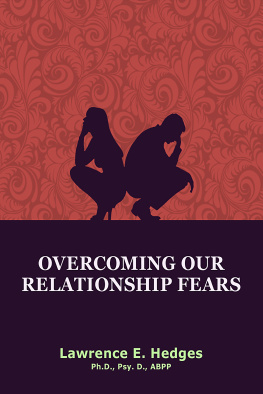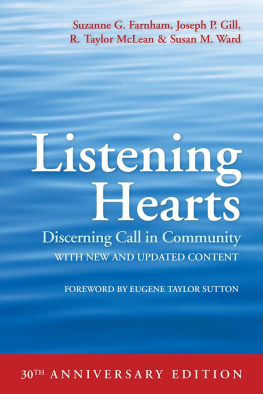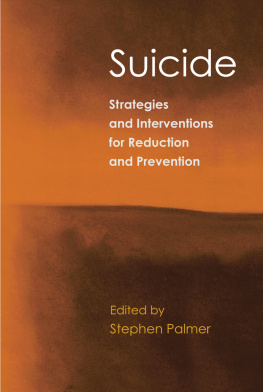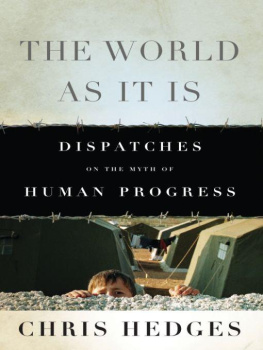Lawrence E. Hedges - The Call of Darkness: A Relational Listening Approach to Suicide Interventions
Here you can read online Lawrence E. Hedges - The Call of Darkness: A Relational Listening Approach to Suicide Interventions full text of the book (entire story) in english for free. Download pdf and epub, get meaning, cover and reviews about this ebook. year: 2018, publisher: International Psychotherapy Institute, genre: Romance novel. Description of the work, (preface) as well as reviews are available. Best literature library LitArk.com created for fans of good reading and offers a wide selection of genres:
Romance novel
Science fiction
Adventure
Detective
Science
History
Home and family
Prose
Art
Politics
Computer
Non-fiction
Religion
Business
Children
Humor
Choose a favorite category and find really read worthwhile books. Enjoy immersion in the world of imagination, feel the emotions of the characters or learn something new for yourself, make an fascinating discovery.
- Book:The Call of Darkness: A Relational Listening Approach to Suicide Interventions
- Author:
- Publisher:International Psychotherapy Institute
- Genre:
- Year:2018
- Rating:3 / 5
- Favourites:Add to favourites
- Your mark:
- 60
- 1
- 2
- 3
- 4
- 5
The Call of Darkness: A Relational Listening Approach to Suicide Interventions: summary, description and annotation
We offer to read an annotation, description, summary or preface (depends on what the author of the book "The Call of Darkness: A Relational Listening Approach to Suicide Interventions" wrote himself). If you haven't found the necessary information about the book — write in the comments, we will try to find it.
Lawrence E. Hedges: author's other books
Who wrote The Call of Darkness: A Relational Listening Approach to Suicide Interventions? Find out the surname, the name of the author of the book and a list of all author's works by series.
The Call of Darkness: A Relational Listening Approach to Suicide Interventions — read online for free the complete book (whole text) full work
Below is the text of the book, divided by pages. System saving the place of the last page read, allows you to conveniently read the book "The Call of Darkness: A Relational Listening Approach to Suicide Interventions" online for free, without having to search again every time where you left off. Put a bookmark, and you can go to the page where you finished reading at any time.
Font size:
Interval:
Bookmark:
Why The Call to Darkness?
There is a simple answer to this question and a more complextheoretical one. But in either case to those vulnerable to occasional orfrequent bouts of depression and suicidality The Call of Darkness is no mere metaphor but a compelling andterrifying reality.
The simple answer rests on early life experiencesthe rhythm ofwaking and sleeping activity of a fetus and neonate and the earliest emergenceof consciousness out of non-consciousness. In waking activity both before andafter birth the earliest sense of agency is deployed into encounters withsustained sensorimotor experiences of otherness that alternate with lapses intosleepdarkness. By the fourth month the forays into otherness experience takeon a definite intentional seeking quality involving expectation so that theprocesses of developing human consciousness and mutual affect regulation trulyget off the ground. Thus, during the third trimester and during what infantresearchers are now calling the fourth trimester, the infant is organizing channels of connection to herworldboth physical and mental until moments of anticipatory and sustainedseeking reliably begin.
The pediatrician-psychoanalyst Donald Winnicott speaks of the babysgoing on being in the first three months and the importance of the motherstotal maternal preoccupation during this time so that the organizing effortsare reinforced in a timely manner and are not thwarted by unnecessaryintrusions or delaysso that the infant is not forced to begin thinking, thatis, trying to figure things out before she is ready.
But we know that many things can and do go wrong to impinge on theseearly organizing activitiespremature birth, adoption at birth, incubators,surgeries, illnesses, depressed or crazy mothers, raging and alcoholic fathers,marital strife, environmental stresses, hostile siblings, invasive toxins,neglectful or abusive caregivers, pets, or even rats in the crib. Impingementsdisrupt babys reaching forays midstream in babys deployment of herperceptual-motor explorations resulting in under- or over-stimulatingexperiences and the never reach that way again becomes established.
Babies vigorously protest intrusions into their need space and maykick, scream, cry, arch their backs, hold their breaths, bang their heads orflail wildly in pain and angst until exhausted and then fall into sleepthepeaceful retreat of darkness, the relief of unconsciousness. Vulnerableindividuals later in life may have this early retreat to peace and darknesstriggered in situations of extreme hopelessness, helplessness, despair andpsychic pain. Or, conversely and paradoxically, in otherwise positivesituations that are anticipated to bring successful connection with another. Thatis, the anticipation of an otherwisesatisfying interpersonal (or social) situation may trigger retreat or collapseinto the relief of darkness because in infancy the original reaching experienceresulted in a traumatic disaster.
The more complex answer to the question Why Darkness? relates toan issue Sigmund Freud worked over during his entire professional career fromhis earliest papers in the 1890s to his final papers in the late 1930s, aphenomenon he referred to as the splitting of the ego. By this Freud meant thatthe earliest sense of agency, the I, necessarily becomes split as it dealswith the world. That is, while one part of the I reaches explorationally intothe world, another part of the I maps what it findsthat is, actively creates and in some sense thenbecomes an internal representation of what is out there.
Hungarian psychoanalyst Alice Balint in an illuminating 1943 paper,Identification expands Freuds thinking on the ego, the I, creating aperceptual-motor-affect identity inside that mirrors an object-affect identityon the outsidethrough the process of identification.But when in infancy the other-self is experienced as traumatizing then theinteractional-narrational quality of the internalized other is likewisetraumatizing. That is, the sequence and affect quality of the perceptual-motorreaching out to contact otherness comes to take on a negative or traumatizinginternalized narrational quality.
In the Organizingexperience the internalized narrational quality requires a shutdown, a retreattoward or into darknessa loss of consciousness. In the Symbiotic experience the internalized narrational quality is thatof creating compelling mutual affect regulation or interactional scenarios.That is, the unique mother-child symbiotic (attachment or mutual affectregulation) scenarios are of an instrumentalnatureeach person behaves in a way designed to get her needs in therelationship met. These internalized instrumental scenarios reappear in laterlife as (usually unconscious) interactional efforts to compel the other to meetmy psychological needs according to my internalized expectations. Saiddifferently, when the Organizingexperience is re-activated in later life there is psychic pain and The Call of Darkness. When the Symbiotic experience is activated inlater life there is anxiety and pressure to get the other to do it my way. Itseems then that completed suicides are most likely derived from Organizing experience while variouskinds of suicide attempts and gestures are more likely derived from theinternalized instrumental scenarios of the Symbioticexperience.
But however one chooses to think of this basic process of creatingor internalizing a subjective world based on the ways one experiences the external objective world, in the earliest months oflife the early external world may offer some hard knocks. For example, Frenchpsychoanalyst Andre Green speaks of the dead mother as an internal under-stimulatingrepresentation of a blank-white, empty, dead but nevertheless present earlymaternal environment that colors ones subsequent experiences of emptiness inthe world.Conversely, when a child is forced bytraumatic over-stimulation to retreat into the peace and darkness ofunconsciousness and sleep, blackness and darkness is internalized as a refugeagainst reaching in some way that has intolerably and painfully failed. Inlater life idiosyncratic forms of interpersonal or social reaching in anticipationof success and fulfillment may paradoxically trigger the other side of thesplit ego into experiencing either white, blank emptiness or a painful collapseinto darkness.
Suicidologist Edwin Shneidman considers the relation between ourcultural attitudes toward sleep and suicide. He asks: Are there, for certainindividuals, some instructive parallels between overt self-destructivebehaviors and changes in ordinary states of consciousness, especially sleep?The kinship between death andsleep is in our folk language. There are at least four kinds of relationshipsthat can be distinguished. (1) Sleep is seen as the replenisher of life. (2)Sleep is also seen as "unplugging" from life. (3) Sleep is called thebrother of death. (4) Sleep is substituted for suicide.
We are altogether too familiar with great and famous personages,creative writers, and artists who at the peak of their creative careers withanticipation of increased future personal and interpersonal successes choose The Call of Darkness and suicide. Thosewho have later written about their experience invariably speak of the anguishof unbearable physical and mental pain having been there in various ways for alifetime and that with near success experiences in external life the terrifyinginternal anticipatory pain becomes unbearablethe split crushing-other sideof the infant ego wins out. People who have experienced suicide attempts andlater succeeded have written extensively on the compulsion, the drive, theaddictive imperative of responding to TheCall of Darkness.Later we will look at how some of these highly successful and creative peoplehave characterized
Font size:
Interval:
Bookmark:
Similar books «The Call of Darkness: A Relational Listening Approach to Suicide Interventions»
Look at similar books to The Call of Darkness: A Relational Listening Approach to Suicide Interventions. We have selected literature similar in name and meaning in the hope of providing readers with more options to find new, interesting, not yet read works.
Discussion, reviews of the book The Call of Darkness: A Relational Listening Approach to Suicide Interventions and just readers' own opinions. Leave your comments, write what you think about the work, its meaning or the main characters. Specify what exactly you liked and what you didn't like, and why you think so.










